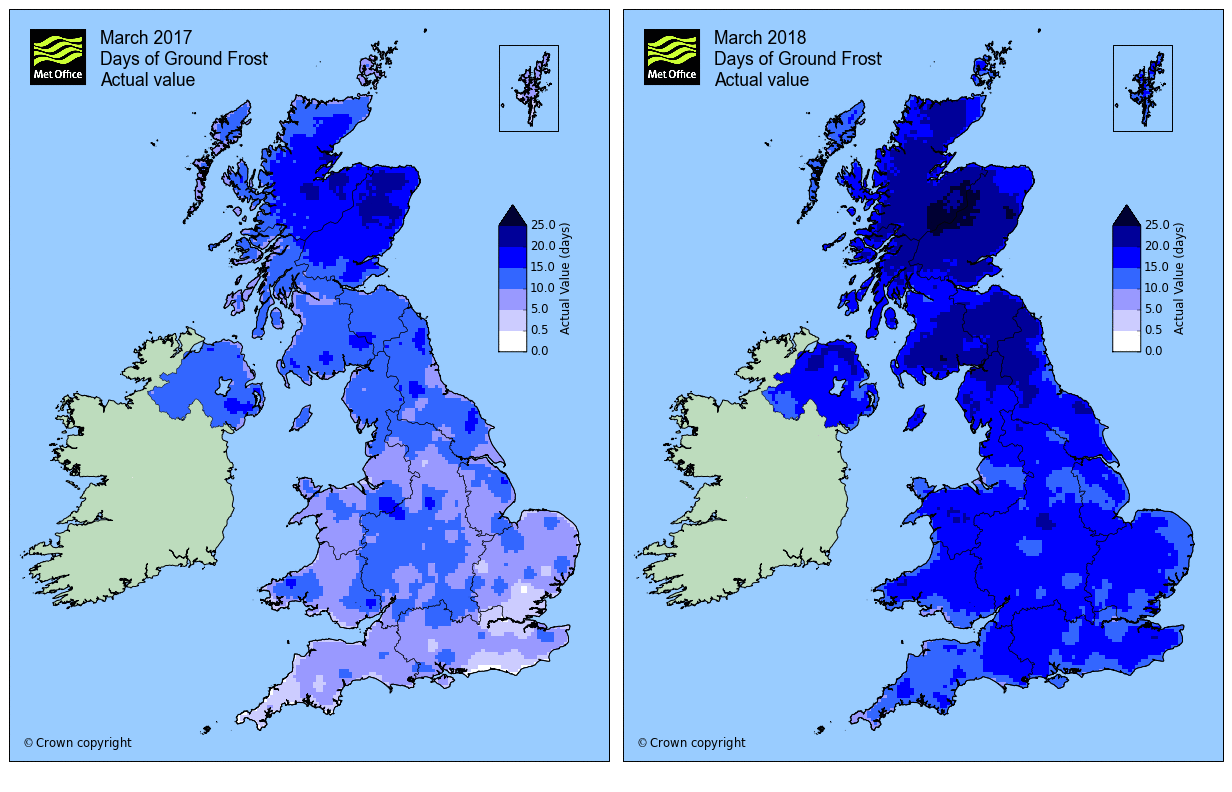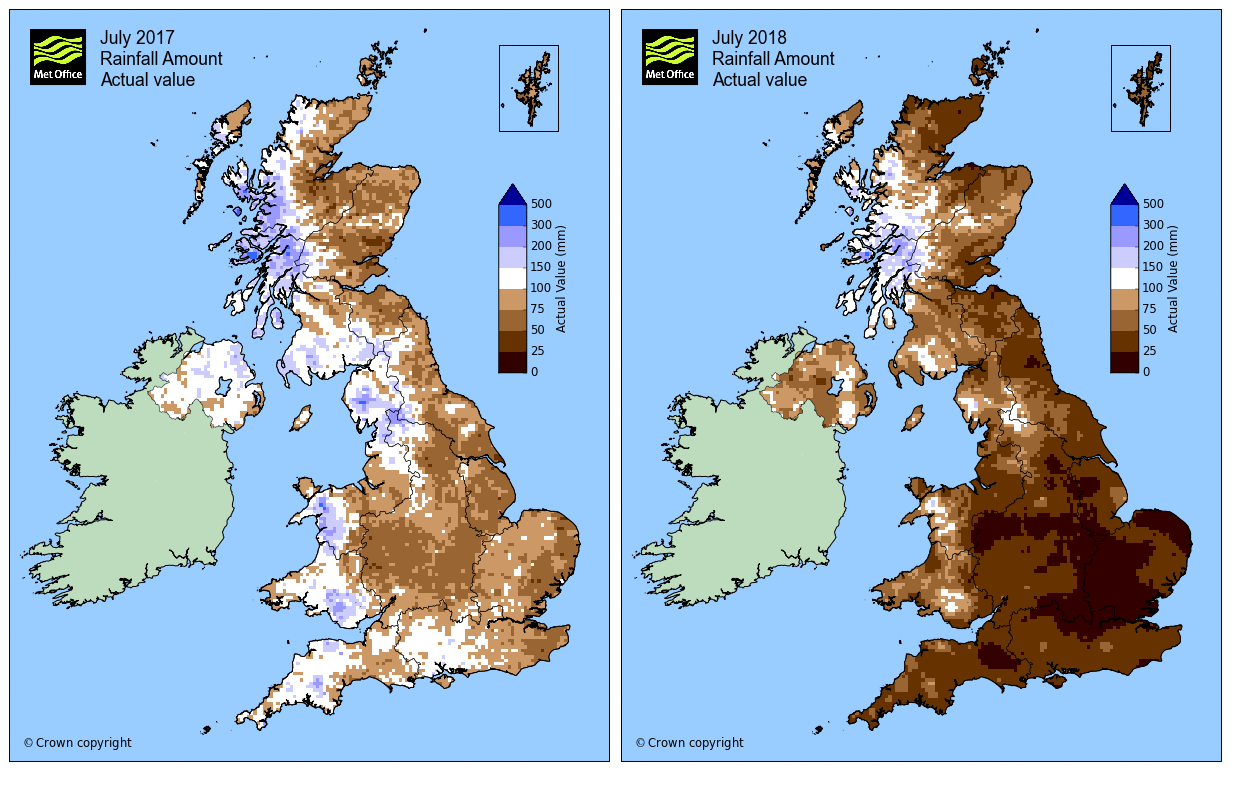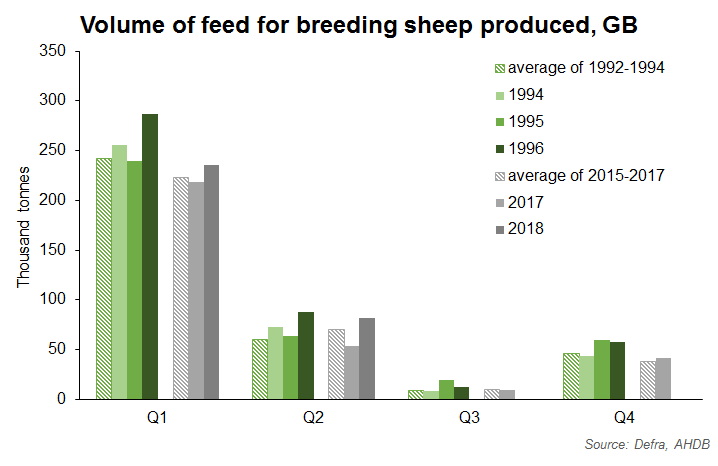Potential far reaching effect of the heatwave on ewe feed usage
Friday, 3 August 2018
This year the weather has reached both highs and lows. Winter was cold and wet, while the summer has been hot and dry. At the end of February and through March much of the country experienced snow. Turnout, especially for cattle, was delayed across the country which has had an impact on forage supplies and feed usage carried over into winter 2018. Straw prices have reached record breaking levels. Although hay prices have not reached the prices of winter 2010/11, they too have been higher. The quality of available forage has also been an issue for some producers.

Trying to find a comparison year for the weather in 2018 is not easy. Although there have been other poor winters, and other summers which have been extremely dry and warm, the combination of the two which has influenced current market conditions is rare. In 2013, there was a cold but dry spring which was followed by a hot, dry spell in July 2013. However, the drier spring meant forage quantities had not been depleted, and the hot, dry period in July was relatively short-lived. In 1995, conditions had been dry from April through to July, and became exceptionally so in August, with temperatures hitting a record high in that month. The extended dry period stressed ground conditions, causing widespread issues.

surprisingly, weather affects feed usage, with the first quarter (Jan-Mar) of any year being the period in which typically over 60% of breeding sheep feed is produced, according to AHDB data. With the weather in summer being similar to 1995, it is perhaps telling that although during the first three months of 1995, breeding sheep feed production decreased by 7% on-the-year, feed production in the whole calendar year went on to increase by nearly 1%. During the third quarter of 1995, breeding sheep feed production increased by 11,500 tonnes year-on-year, to 19,800 tonnes. This may have in-part been due to summer conditions which would have hampered grass growth and therefore forage production, leading to higher demand for bought feed demand later in the year.
There was a notable increase in feed production in the first quarter of the following year, when some of the forage which should have been produced in 1995 would have been fed to sheep. With the conditions of summer 1995 potentially hampering forage production the longer lasting effects may not be surprising, and could be repeated this year.

With the long, cold and wet winter, concentrate feed production at the start of this year (2018) increased significantly, up 16% between January and May on year earlier levels, according to the AHDB GB animal feed production statistics. During the first quarter of 2018, breeding sheep feed production was up 8% year-on-year, to 235,800 tonnes. However, the GB breeding flock officially remaining steady on the year in December 2017, and mortality is likely to have reduced the number of ewes on the ground during that period.
During the second quarter of 2018 (Apr-Jun), GB feed production totalled 81,300 tonnes, an increase of 27,300 tonnes on-the-year. Although a sharp year-on-year increase, production during quarter two of 2017 was low compared to other recent years. Between April and June 2016, feed production totalled 80,000 tonnes.
Lack of forage already means some tough choices are having to be made. Some producers are currently grazing fields originally intended for forage production; others are using forage intended for winter. Both have the same effect, reducing available stocks going into this winter. Some farmers are accepting the additional costs sooner rather than later, by supplementary feeding concentrates now instead of eating into forage stocks. Anticipating longer term forage shortages and rising feed prices, it seems to suggest that farmers need to look at current feed price and availability against the expected price and availability and buying feed later in the winter. It is important that producers assess what forage they need for the winter and what they have available as soon as possible and look at alternatives. In addition to the concern about winter feed availability, the impact of limited feed availability and high temperatures on fertility will be top of agenda as the year progresses. For many in the industry, the bottom line is under pressure and decisions are far from straightforward.
Although much of the spring planting was delayed, due to conditions up until mid-June the crops largely caught up. However the lack of substantial rain since then will have impacted yields. Straw supplies may also be low due to a decrease in wheat yields expected. The latest report on GB harvest, suggests that yields appear to be in-line with the five year average, with planting area reported to be back 2% on year earlier levels. These reduced yields/volumes will impact both the straw market and the feed market. Click here to read analysis by AHDB Cereals and Oilseeds on the USDA’s latest forecast for global wheat supplies.
With a potentially tight feed market and reduced quantity of forage, planning for winter will be as important as ever this year. To help with forward planning, AHDB has a feed budget calculator which is available here.

